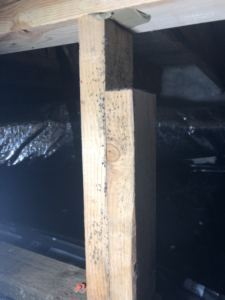What can breathing in mold do?
Breathing in different type of mold can cause allergic responses especially in those with weakened immune systems. Sometimes these can be severe reactions such as asthma attacks, or difficulty breathing. You should also consider that children, especially those with childhood asthma and the elderly may be particular sensitive to mold spores.
You may not think about it often, but the air you breathe is important. Mold can cause health problems, so it’s important to know how to protect yourself. Keep reading to learn more!
Contents
1. What is mold and what are the health risks associated with it
2. The most common places to find mold in your home
3. How to get rid of mold and keep it from coming back
4. What to do if you think you’ve been exposed to mold
What Is Mold And What Are The Health Risks Associated With It
Mold is a type of fungus that thrives in moist environments. It is the moist environments in our homes that encourage mold growth. There are thousands of different types of mold, and they can be found both indoors and outdoors.
Black mold is an example of toxic molds. Black Mold needs to be killed, and cleaned by a professional restoration company as quickly as possible to stop airborne mold spores and avoid inhaling mold spores. Mold growth happens by forming mold spores, which are ejected into the air and can potentially germinate and grow into new mold colonies.
Health effects
Mold exposure can cause a variety of adverse health effects, depending on the type of mold. Some common mold exposure symptoms include coughing, sneezing, runny nose, watery eyes, congestion, skin rashes, and asthma attacks. In some cases, mold can also lead to more serious health problems such as respiratory infections and even death.
Exposure to high levels of mold can cause a variety of respiratory problems, including asthma symptoms, allergic reaction, difficulty breathing, and shortness of breath, and hypersensitivity pneumonitis. In some cases, exposure to mold can also lead to serious infections.
Molds affect people differently. Those with compromised immune systems, for example, may have more of the severe symptoms, then healthy people would.
The Most Common Places To Find Mold In Your Home
Mold can be found almost anywhere in your home, but some places are more common than others. Here are the most common places to find mold in your home:
1. In the bathroom –
Mold loves damp environments, and the bathroom is a perfect place for it to grow. Often, mold will form on the grout between tiles, on caulking around bathtubs and showers, and on shower curtains.
2. In the kitchen –
The kitchen is another common place for mold to grow, especially in areas that are regularly wet like under the sink or around the dishwasher. Also water leaks from plumbing issues can cause a mold problem and be a source of mold growing.
3. In the basement –
The basement is often a damp environment, making it an ideal place for mold to grow. You often see mold growth on basement walls due to the indoor humidity.
In our examples it is because of excessive moisture that mold growth occurs.
How To Get Rid Of Mold And Keep It From Coming Back
Indoor mold will require mold remediation. This is when the visible mold growth is killed and the moldy surfaces removed by trained professionals. This is the best way to stop the growth of household mold.
Next, make sure that your home is properly ventilated. In some cases this may mean installing exhaust fans, to circulate fresh air and allow moisture to escape.
Mold growth happens in conditions that are moist and humid, so adequate ventilation will help prevent mold growth. You should also regularly clean all of your hard surfaces, especially those that are prone to moisture accumulation to help prevent mold.
Finally, if you do see any signs of mold, be sure to address the mold problem immediately. Ignoring the issue will only make mold worse and could lead to mold allergies or respiratory symptoms down the road.
Control Mold Growth
The key to preventing mold from coming back is to identify and correct the factors that created the environment in which mold thrives.
Mold needs moisture, darkness, and a food source to grow, so you can get rid of it by addressing any of these conditions. For example, you can increase air circulation, lighten up dark areas, or fix plumbing leaks.
What To Do If You Think You’ve Been Exposed To Mold
If you think you may have mold exposure, it is important to take action right away. Exposure to mold can cause a variety of health concerns.
Some symptoms of mold exposure include respiratory issues like asthma development, lung disease, or skin irritation, and gastrointestinal distress. Here are some steps you should take if you think you have experienced mold exposure:
1. Remove yourself from the mold. If possible, leave the area where you had mold exposure and go someplace else. This will help reduce your level of exposure and potentially prevent further health problems.
2. Obtain an air sample to test for mold spores. You can purchase a mold test kit online or at your local hardware store. Testing the air for mold spores can tell you whether or not there is a problem
Conclusion
Breathing in mold can cause some serious symptoms of mold exposure. If you think you’ve had early mold exposure, it’s important to take action right away, before allergic reactions and extensive mold growth starts. Mold can be found almost anywhere in your home, but there are ways to remove mold and keep it from coming back.

